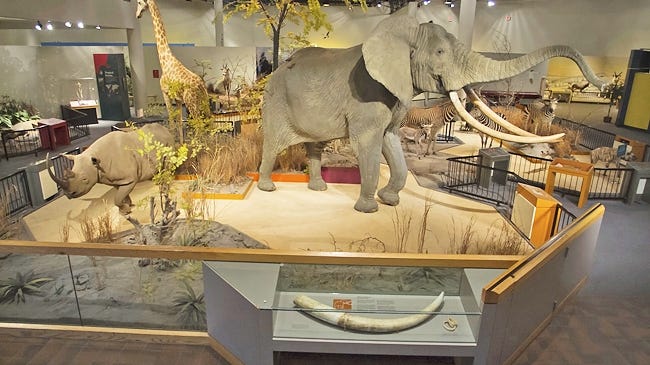Group vetting options for Delbridge animal collection will open meetings to public
Decision on collection expected by end of year
A workgroup assembled by Mayor Paul TenHaken to come up with options for a 170-piece collection of taxidermy mounts that had been on display at the Delbridge Museum of Natural History will meet for the first time this week.
The eight-member panel, dubbed the Brockhouse Collection at Delbridge Museum Workgroup, will convene at 8 a.m. Wednesday at City Hall in downtown Sioux Falls. That’s according to both the mayor’s office as well as a meeting agenda posted online Monday.
The group, led by Parks and Recreation Director Don Kearney and Great Plains Zoo CEO Becky Dewitz, will begin its work to comb through the inventory of animal mounts, many of which tested positive for arsenic earlier this year before the natural history museum was abruptly closed to the public.
NEWS: 'Shock waves' sent through world of museums by Sioux Falls decision to dump Delbridge collection
“The meeting this week and future meetings involving the entire work group will be open to the public to attend,” TenHaken spokeswoman Vanessa Gomez told The Dakota Scout Monday.
While open to the public, no public input will be taken at the inaugural meeting. However, the workgroup could choose to take public input at future meetings.
“Regardless, the public will have the opportunity to provide input when the group’s final surplus plan is presented to City Council at an informational meeting before the end of the year,” Gomez said.
Councilors Rich Merkouris and Alex Jensen, Sioux Falls Zoo and Aquarium Board Chair Jeanelle Lust, Parks and Recreation Board Member Mick Conlin, and two community members, Ally Brandner and Jeff Scherschligt are on the workgroup.
Gomez said the group could choose to delegate tasks by forming subcommittees, which would not necessarily meet in public.
The Brockhouse Collection at Delbridge Museum Workgroup’s next scheduled meeting is Oct. 19.
The announcement that the city planned to eliminate the collection because of arsenic caused international alarm in the museum industry. Arsenic was commonly used in taxidermy to preserve the exhibits.








